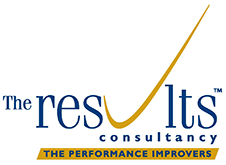 Most professional services firms recognise their existing client base is a key source for increased revenue. Cross-selling additional support to a client is often an easier opportunity to convert and comes with a lower cost of sale.
Most professional services firms recognise their existing client base is a key source for increased revenue. Cross-selling additional support to a client is often an easier opportunity to convert and comes with a lower cost of sale.
We do, however, come across professionals who say they are uncertain about how best to cross-sell and, in particular, introduce colleagues into their client relationships. So in this article we’ve shared some of the cross-selling approaches which professionals are applying successfully to today’s client relationships.
These result in firms supporting the client in a greater number of ways and, when done well, building client loyalty.
Aligning practice areas and colleagues who have the best synergy
Many professionals find that the nature of their expertise points to a handful of colleagues who they have a synergy with. These are the colleagues it is then easier to cross-sell, because their expertise is a natural extension of their own and the client recognises the link and value that much more easily.
As a result of this recognition, we’ve seen professionals mapping out those colleagues who they would find it easy to bring into their client relationships and buddying up with them. To do so they initially consider their client relationships, the nature of their work and the issues and opportunities their clients have. They then map out those in the firm who would be relevant to bring in.
Face-to-face insight sharing sessions
To be able to confidently recommend a colleague, you need to be knowledgeable about what they do and how they help their clients. This means being armed with examples of how your colleagues have helped others in this situation, so your client is more willing to act on your suggestion.
In an effort to gain this understanding we’ve seen an increasing number of professionals set aside time on a fairly regular basis (typically once a quarter) to find out more about what their colleagues are doing.
In the discussion both professionals share recent issues they’ve helped clients with and outline assignments/cases they’re working on. The format for the discussion varies but the most effective ones combine some form of face-to-face element (such as informal coffees, lunches, meetings, and video-conferences for cross-territory teams) as this really helps the professionals involved gain greater insight.
Greater proactivity in keeping ‘up to speed’ with the client’s situation
To be able to recommend someone to a client you need to have a good understanding about their current business situation. If not, you’re going to find it hard convincing them why your colleague could be of benefit.
It helps if you can be alert to those ‘triggers’ in the client’s organisation that point to your colleague’s specialism. Over recent years, we’ve seen professionals become much more proactive about following their clients’ news. This improves their commerciality too and demonstrates their interest in the wider areas of the client’s business, not just those relating to the professional’s specialism.
Examples we’ve seen include:
- Making more of social media to follow the client announcements and developments
- Setting alerts such as via Google Alert or Mention to gain notifications when the client appears in the news
- Signing up to the client’s marketing communications
- Initiating periodic discussions with the client which look beyond specific assignments and address how the wider business/sector is doing and the client’s longer term plans
- Catching up with other advisers to the client to learn from their work with the client and any additional insight they have
- Using different members of the firm’s client account team to develop relationships at different levels within the client organisation. This enables them to gather insight from different sources and perspectives. Information gleaned here is then fed back at regular internal team meetings. Any potential opportunities to offer greater help, as a result, is tasked to specific team members.
Use the post-deal, matter or assignment review to introduce new people to your client contacts
Some professionals say they struggle to know when it’s best to suggest a colleague’s expertise to their clients. Often a good time is to use the post-deal, matter or assignment review to introduce new people to client contacts.
Invariably a project or deal highlights new areas of future focus and, if you can ‘talk up’ your colleagues, this can be a great time to position them effectively with a client contact. Successful phrases and questions to we’ve seen used include:
- Would it be helpful if I introduced…
- Would it be useful if my colleague gave you a call on that?
- That’s not my area of specialism, but I’ll get my colleague to contact you.
- I could bring along a colleague who specialises in…
Successful professionals find they gain a better acceptance rate from clients if, in their suggestion/proposition, they can link their colleague’s introduction to a specific business issue or opportunity the client currently has on their ‘agenda’.
Summary
With competition only set to intensify, professional firms will always be keen to create new work opportunities from their existing clients. Fundamental to this will be colleagues’ abilities to look widely at a client’s situation and spot areas where the firm can bring additional support. This means having both a strong understanding of the client’s situation and plans, and also what results and outcomes colleagues are achieving for clients.
One final tip for cross-selling success. Once you have brought a client and colleague together, it really pays to keep involved. Maintain contact with them both to see if you can further help the working relationship. There might be valuable insight you can give to your colleague and of course your client may want you to remain visible as their relationship with them originates from you. Offer help to both parties to ensure the project/case runs smoothly –your longer-term relationship depends on it!


